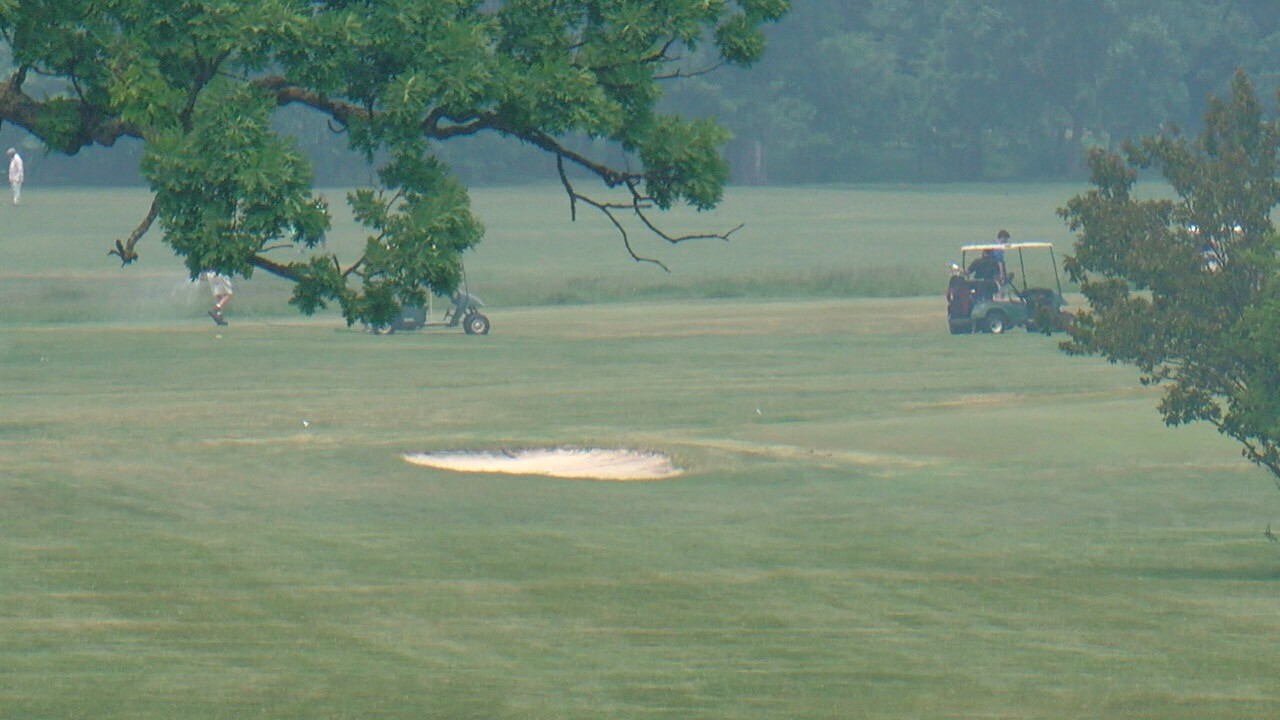BUFFALO, NY (WKBW) — Hazy conditions continue across the Buffalo Niagara region from wildfires in Canada. It continues to create issues with the air quality.
“I just came for a walk on my lunch break here and I smelled the fire. I wasn't sure what it was totally, but now I know,” reacted Megan Luongo, Buffalo resident.
Hazy conditions at Delaware Park in Buffalo from the Canadian wildfires. It also smells smoky. Experts say if you have any respiratory conditions, if could impact you. @WKBW pic.twitter.com/FXRvCQhW5i
— Eileen Buckley (@eileenwkbw) June 6, 2023
There is a haze hanging over Delaware Park in Buffalo that is coming into the region from the Canadian wildfires.
Luongo noticed it.

“I did notice the haze over the whole park. I definitely would be concerned that it's been here for days now and it's not going away,” Luongo remarked.
You can also smell the wildfire smoke and for some, it can be extremely dangerous to their health.

“When you think of wildfires, it's not only just burning, organic matters, burning a lot of man-made structures and so with that you not only have like the particulate matter, which is well known to exacerbate symptoms of, you know, COPD, asthma, allergies, even people's long-haul COVID these types of these breathing issues, it makes it worse,” explained Stacy Malesiewski, marking director, Austin Air Systems.
No one knows more about clean air with these purification units made right here in Buffalo.

“If you have a respiratory condition, obviously you want to stay indoors, we always tell people to make sure you're you know, shutting the windows,” replied Malesiewski.
I met with University at Buffalo Professor Meng Wang who is keeping a close eye on the air quality in his office on the South campus.

“I have actually a small monitor here and this one is usually in my office is zero, which means it's really clean, but now it's 25,” noted Wang. “When the air is polluted like this, we advise people not to go out, especially during the peak hours. Stay at home, close the window, reduce infiltration, or if they have like purifier turn it on, keep it running all the time."

The professor says the wildfire creates "black carbon” in the air.
“So when the forest is burned, then the particles, especially the black particles, were suspended in the air and when they are — air below here — you can see that all these wildfires coming through the the the Great Lake and impacted the Buffalo area,” described Wang.
The smoke follows wind patterns and right now it is blowing into the Western and Central New York regions. Experts say wildfire smoke is the "most dangerous" type of pollution.

“Wildfire smoke is so problematic on multiple different levels,” commented Malesiewski. “Smoke doesn't stay put — it doesn't take the route of you know I-90. It will travel wherever the wind takes it."
“Everyone wants to breathe clean air, so it's definitely a little bit concerning,” Luongo declared.





